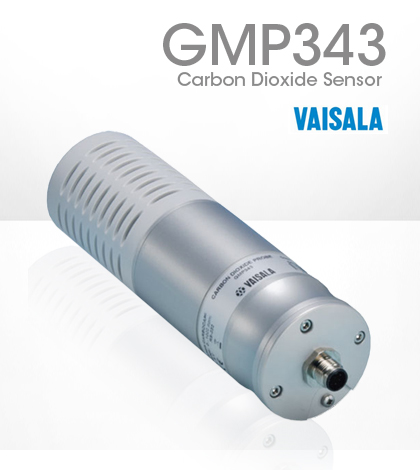Vaisala GMP343 carbon dioxide sensor tracks CO2 in air, soil and water

Vaisala GMP343 carbon dioxide sensor
Vaisala’s GMP343 carbon dioxide sensor is a versatile probe with no moving parts and minimal maintenance needs. Its small size makes installation simpler than with other sensors – it weighs less than 1 pound and has a diameter of just 2 inches.
“Some applications require several transmitters installed at different points,” said Fernanda Cunha, Application Sales Engineer. A small size and low weight play a huge factor in project success, she says.
The GMP343 is built for measuring carbon dioxide – a key greenhouse gas – mostly in outdoor environments like growing chambers or crop fields. The sensor can also measure CO2 concentrations within soil.
“A very interesting use we have seen grow in the past years is the measurement of carbon dioxide in aquatic ecosystems, ponds or even marine environments, with great results,” said Cunha.
Monitoring around briny salt water could be detrimental to sensors over time, but the GMP343, with the correct accessories, can handle harsh environments. An anodized aluminum housing and cap protect its inner circuitry.
It relies on pulses of infrared light emitted by a small filament lamp. The light beams toward a heated mirror that is plated and coated with gold. A detector catches the amount of light that is reflected and translates it into a carbon dioxide concentration.
This setup stabilizes sensor performance and reduces the need to calibrate. Cunha says drifts in readings are as low as 2 percent per year in temperatures below 40 degrees Celsius (104 degrees Fahrenheit). This isn’t much, considering the sensor’s accuracy from 0 to 1000 parts per million is plus or minus three parts.
The probe comes calibrated from Vaisala’s factory in Finland and re-calibration is recommended whenever operating conditions cause more or less drift. “The GMP343 is notable for its high accuracy,” said Cunha. “But the harsher the operating conditions, the more drift the unit may see.”
Its accuracy is helped by compensations for pressure, temperature, humidity and oxygen. Temperature is compensated by an integrated thermistor, while the others are adjusted via algorithms that users can change if needed.
Cunha says these are needed because of the sensor’s principles of operation. Its readings are proportional to the number of carbon dioxide molecules in each sample. “Pressure and temperature will have a direct impact on the amount of molecules in the sensor, while humidity and oxygen will affect the absorption of the CO2,” said Cunha.
The Vaisala GMP343 outputs compensated data in analog signals or digital RS232 or RS485, so any data logger that receives those signals can be used with the sensor. Vaisala also offers a hand-held instrument – the MI70 Indicator – that can power the unit and log data, then transfer it to a PC via USB for data manipulation.




Magdy Saeb
November 27, 2014 at 8:47 am
I would like to know more about real-time applications. Thank you!